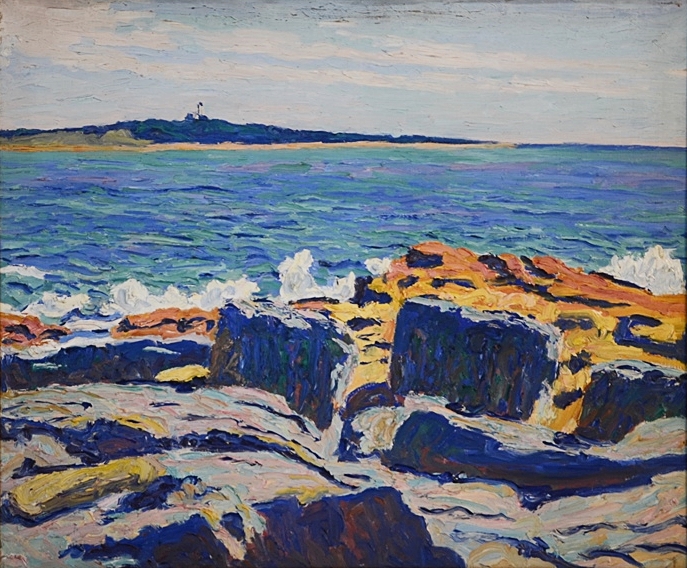Bakers Island, Salem, Massachusetts
Medium
Oil on CanvasSize
25in x 30in (64cm x 76cm)Price
SOLDProvenance
Artist's Estate to Art Students League, New York N.Y. Chapellier Galleries Inc. 815 Park Avenue,About the Artist
Allen TUCKER (1866-1939)
Born in Brooklyn in 1866, he graduated from Columbia University with a degree in architecture, joining his father’s firm of McIvaine & Tucker. During this period he studied painting at the Art Students League with impressionist John H. Twachtman, but it was not until he reached 38 that he decided to become a full-time artist.
Impressionism was a great influence on him, but it was Van Gogh that had the most marked effect on Tucker’s early work, the use of bold colour and impasto and the effects of light on water are clearly visible in his works on the New England coast, such as views of Bakers Island.
In 1911 he became a charter member of the Association of American Painters and Sculptors, the group who were responsible for the notorious Armory Show of 1913 that so enraged many by introducing abstract art to the American public.
In 1919 he became a founding member of the Society of Independent Artists, the group who as the Impressionists before them rebelled against tradionalism in art.
1918 saw Tucker’s first major solo exhibition at the Whitney Studio Club (later the Whitney Museum of American Art). Here he became an advisor to the Director.
Throughout his life, he maintained an affection for and association with his art school, the Art Students League in New York, teaching there between 1921 and 1928. He was an Honary Member and bequeathed them a large collection of his works.
Works by Tucker are in major galleries, museums, private and corporate collections, including, The Metropolitan Museum of Art,New York, Art Institute of Chicago, Albright-Knox Art Gallery, Brooklyn Museum, Phillips Collection, Washington D.C.etc.
Allen Tucker died in New York City in 1939.
Category
20th Century


